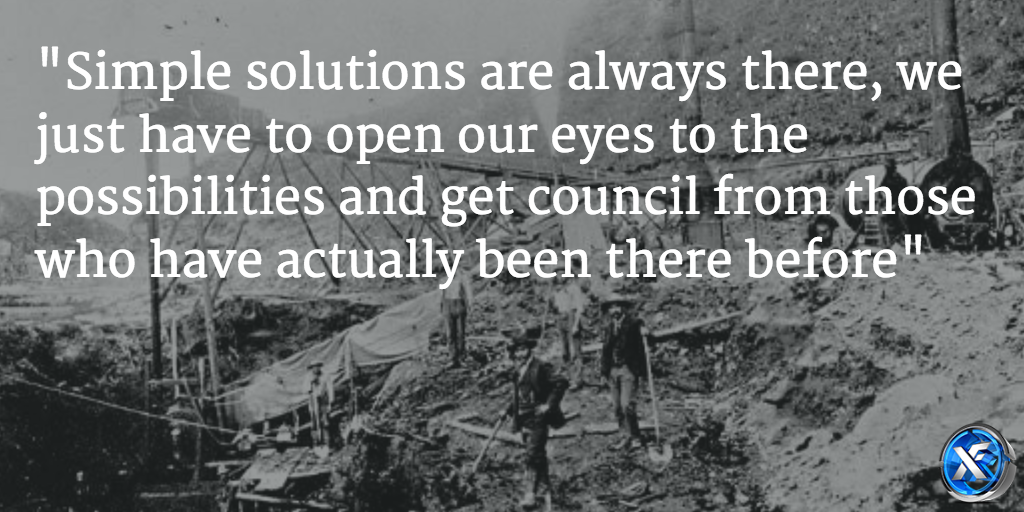In Napoleon Hill’s life-changing book “Think and Grow Rich,” he tells the story of R.U. Darby and his uncle and how they were caught up in the “goldfever” during the great California Gold Rush. They came out from Maryland to stake their claim. They worked with just a pick, and after a few weeks they were rewarded with finding gold.
They went back home and raised money to buy machinery so they could dig deeper. They found more gold and their excitement grew. As they dug deeper and deeper they found no more gold, and ran out of money. They thought they had come to the end of their rainbow, and finally they decided to give up.
They sold the machinery and mine to a junk man for pennies on the dollar. The junk man, knowing nothing of mining, called in an engineer to help and with his advice he dug three feet to the left. This minor adjustment is what led to them finding millions of dollars worth of gold, simply because this junk man knew enough to seek out expert advice.
A few years ago, Sharon Lechter and Greg Reid wrote the book, “Three Feet from Gold: Turn Your Obstacles into Opportunities.” I am a big believer that right next to any limitation lies an equal or greater potential. So, where is our personal gold mine? It is between our ears. And, learning to “get your mind to work for you rather than against you” takes daily practice.
This is where opportunity truly meets preparation. If you look at every”perceived” obstacle as an opportunity, you will come to know that you are always just “THREE POSITIVE THOUGHTS” from gold.
I had a baseball player once tell me, one of his limitations was that he didn’t have fast enough lateral movement and as a shortstop it was keeping him from advancing to the next level. I told him to keep working physically toward better lateral movement, but what truly changed a limitation into great lateral movement is when I changed his “mental” focus. I helped him to be more aware of the pitch and location, and to zero in on the swing of the batter. What happened then was, he began to see where the ball was going sooner, so he was in turn able to get to those balls he had never before been able to reach. As a result he moved up from Double A to Triple A and then into the Major Leagues.
In tennis, the great players watch the swing of their opponents racquet and know if they are hitting with under-spin or top-spin. This helps them to already be getting into position before the ball even crosses the net towards their side. Beginners however, wait for the ball to bounce before they determine what to do, so they are constantly in “reaction” mode rather action mode.
Simple solutions are always there, we just have to open our eyes to the possibilities and get council from those who have actually been there before. Then, positively move forward and focusing your thoughts on the gold at hand, which may only be three feet to the left and within your reach.

